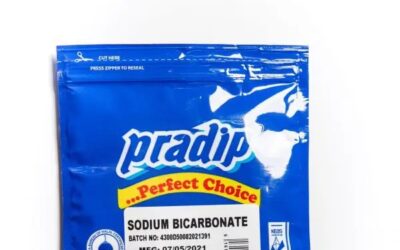Hospital cleaning is a critical task that requires a high level of attention to detail and the use of specialized cleaning techniques and equipment. A clean hospital environment is essential for preventing the spread of germs and infections, maintaining the health and well-being of patients and staff, and ensuring the overall functionality of the facility.
The first step in properly cleaning a hospital is to develop a comprehensive cleaning plan. This plan should outline the specific cleaning tasks that need to be performed, the frequency of cleaning, and the staff responsible for each task. It’s essential to have a clear understanding of the different areas of the hospital and the specific cleaning needs of each area. For example, patient rooms will require more frequent cleaning than administrative areas.
Next, it’s essential to select the appropriate cleaning products and equipment for the job. Hospital cleaning requires the use of specialized cleaning solutions, such as disinfectants, that are specifically designed to kill germs and bacteria. These products should be used in accordance with the manufacturer’s instructions and should be stored and handled safely.
The staff responsible for cleaning the hospital should be properly trained and equipped with the appropriate personal protective equipment (PPE) to ensure their safety while performing their duties. This includes gloves, masks, and eye protection, as well as appropriate clothing to protect against exposure to chemical cleaners.
Once the cleaning plan and materials are in place, it’s essential to follow a strict cleaning schedule to ensure that all areas of the hospital are kept clean and sanitized. This schedule should include a daily cleaning routine, as well as regular deep cleaning of high-touch surfaces and high-traffic areas.
The daily cleaning routine should include tasks such as dusting, vacuuming, and mopping. These tasks should be performed in all areas of the hospital, including patient rooms, hallways, and common areas. In addition to these tasks, it’s also essential to clean and disinfect high-touch surfaces such as doorknobs, light switches, and bed rails.
Deep cleaning should be performed on a regular basis and should include tasks such as scrubbing floors, walls, and ceilings, as well as cleaning and sanitizing restrooms, shower rooms, and other areas where bodily fluids may be present. It is also important to pay special attention to areas such as the operating room, which requires strict adherence to infection control protocols.
In addition to the daily and deep cleaning, it’s essential to have a plan in place for handling spills and accidents. This should include procedures for cleaning and disinfecting surfaces and equipment, as well as protocols for handling hazardous materials such as bodily fluids.
It’s also important to have a system in place for monitoring and documenting the cleaning process. This can include regular inspections, checklists, and audits to ensure that all cleaning tasks are being performed correctly and that all areas of the hospital are being kept clean and sanitary.
In conclusion, properly cleaning a hospital requires a comprehensive plan, specialized cleaning products and equipment, and a dedicated team of trained staff. By following a strict cleaning schedule, paying attention to high-touch surfaces and high-traffic areas, and having a plan in place for spills and accidents, you can ensure that your hospital remains clean and safe for patients, staff, and visitors. Remember that cleaning is an ongoing process, so it’s essential to monitor and document the cleaning process and make adjustments as needed to ensure the highest levels of cleanliness are maintained
Hospital cleaning is a critical task that requires a high level of attention to detail and the use of specialized cleaning techniques and equipment. A clean hospital environment is essential for preventing the spread of germs and infections, maintaining the health and well-being of patients and staff, and ensuring the overall functionality of the facility.
The first step in properly cleaning a hospital is to develop a comprehensive cleaning plan. This plan should outline the specific cleaning tasks that need to be performed, the frequency of cleaning, and the staff responsible for each task. It’s essential to have a clear understanding of the different areas of the hospital and the specific cleaning needs of each area. For example, patient rooms will require more frequent cleaning than administrative areas.
Next, it’s essential to select the appropriate cleaning products and equipment for the job. Hospital cleaning requires the use of specialized cleaning solutions, such as disinfectants, that are specifically designed to kill germs and bacteria. These products should be used in accordance with the manufacturer’s instructions and should be stored and handled safely.
The staff responsible for cleaning the hospital should be properly trained and equipped with the appropriate personal protective equipment (PPE) to ensure their safety while performing their duties. This includes gloves, masks, and eye protection, as well as appropriate clothing to protect against exposure to chemical cleaners.
Once the cleaning plan and materials are in place, it’s essential to follow a strict cleaning schedule to ensure that all areas of the hospital are kept clean and sanitized. This schedule should include a daily cleaning routine, as well as regular deep cleaning of high-touch surfaces and high-traffic areas.
The daily cleaning routine should include tasks such as dusting, vacuuming, and mopping. These tasks should be performed in all areas of the hospital, including patient rooms, hallways, and common areas. In addition to these tasks, it’s also essential to clean and disinfect high-touch surfaces such as doorknobs, light switches, and bed rails.
Deep cleaning should be performed on a regular basis and should include tasks such as scrubbing floors, walls, and ceilings, as well as cleaning and sanitizing restrooms, shower rooms, and other areas where bodily fluids may be present. It is also important to pay special attention to areas such as the operating room, which requires strict adherence to infection control protocols.
In addition to the daily and deep cleaning, it’s essential to have a plan in place for handling spills and accidents. This should include procedures for cleaning and disinfecting surfaces and equipment, as well as protocols for handling hazardous materials such as bodily fluids.
It’s also important to have a system in place for monitoring and documenting the cleaning process. This can include regular inspections, checklists, and audits to ensure that all cleaning tasks are being performed correctly and that all areas of the hospital are being kept clean and sanitary.
In conclusion, properly cleaning a hospital requires a comprehensive plan, specialized cleaning products and equipment, and a dedicated team of trained staff. By following a strict cleaning schedule, paying attention to high-touch surfaces and high-traffic areas, and having a plan in place for spills and accidents, you can ensure that your hospital remains clean and safe for patients, staff, and visitors. Remember that cleaning is an ongoing process, so it’s essential to monitor and document the cleaning process and make adjustments as needed to ensure the highest levels of cleanliness are maintained
Hospital cleaning is a critical task that requires a high level of attention to detail and the use of specialized cleaning techniques and equipment. A clean hospital environment is essential for preventing the spread of germs and infections, maintaining the health and well-being of patients and staff, and ensuring the overall functionality of the facility.
The first step in properly cleaning a hospital is to develop a comprehensive cleaning plan. This plan should outline the specific cleaning tasks that need to be performed, the frequency of cleaning, and the staff responsible for each task. It’s essential to have a clear understanding of the different areas of the hospital and the specific cleaning needs of each area. For example, patient rooms will require more frequent cleaning than administrative areas.
Next, it’s essential to select the appropriate cleaning products and equipment for the job. Hospital cleaning requires the use of specialized cleaning solutions, such as disinfectants, that are specifically designed to kill germs and bacteria. These products should be used in accordance with the manufacturer’s instructions and should be stored and handled safely.
The staff responsible for cleaning the hospital should be properly trained and equipped with the appropriate personal protective equipment (PPE) to ensure their safety while performing their duties. This includes gloves, masks, and eye protection, as well as appropriate clothing to protect against exposure to chemical cleaners.
Once the cleaning plan and materials are in place, it’s essential to follow a strict cleaning schedule to ensure that all areas of the hospital are kept clean and sanitized. This schedule should include a daily cleaning routine, as well as regular deep cleaning of high-touch surfaces and high-traffic areas.
The daily cleaning routine should include tasks such as dusting, vacuuming, and mopping. These tasks should be performed in all areas of the hospital, including patient rooms, hallways, and common areas. In addition to these tasks, it’s also essential to clean and disinfect high-touch surfaces such as doorknobs, light switches, and bed rails.
Deep cleaning should be performed on a regular basis and should include tasks such as scrubbing floors, walls, and ceilings, as well as cleaning and sanitizing restrooms, shower rooms, and other areas where bodily fluids may be present. It is also important to pay special attention to areas such as the operating room, which requires strict adherence to infection control protocols.
In addition to the daily and deep cleaning, it’s essential to have a plan in place for handling spills and accidents. This should include procedures for cleaning and disinfecting surfaces and equipment, as well as protocols for handling hazardous materials such as bodily fluids.
It’s also important to have a system in place for monitoring and documenting the cleaning process. This can include regular inspections, checklists, and audits to ensure that all cleaning tasks are being performed correctly and that all areas of the hospital are being kept clean and sanitary.
In conclusion, properly cleaning a hospital requires a comprehensive plan, specialized cleaning products and equipment, and a dedicated team of trained staff. By following a strict cleaning schedule, paying attention to high-touch surfaces and high-traffic areas, and having a plan in place for spills and accidents, you can ensure that your hospital remains clean and safe for patients, staff, and visitors. Remember that cleaning is an ongoing process, so it’s essential to monitor and document the cleaning process and make adjustments as needed to ensure the highest levels of cleanliness are maintained




0 Comments